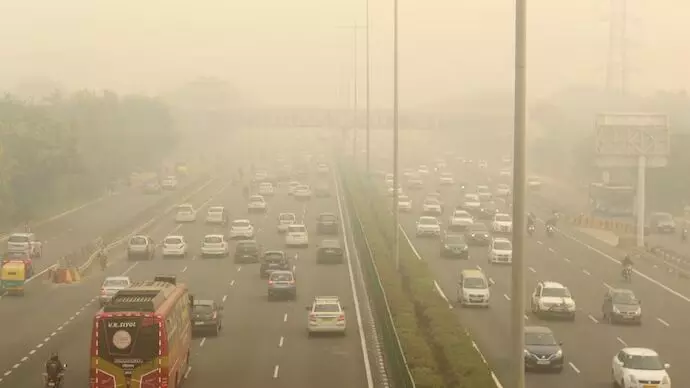Improvement in Delhi's annual PM2.5 levels since 2015-17 halted in 2023, says CSE report

New Delhi: Delhi-NCR recorded the longest spell of 'very poor' or worse air quality and the maximum number of smog episodes in November and December 2023 in the last six years, according to a new analysis.
The Centre for Science and Environment (CSE), an independent think-tank that analysed pollution data for Delhi-NCR, said the gradual long-term improvement in annual PM2.5 levels since 2015-17 halted in 2023.
This occurred despite cleaner-than-usual summer and monsoon seasons and significantly reduced intrusion of smoke from farm fires in northern states. However, this winter witnessed unusually low surface wind speeds, trapping high levels of local pollution.
Due to the impact of unusual winter levels, the overall annual levels have plateaued and worsened, reversing the gains of the long-term downward trend, the CSE said.
Despite a decrease in stubble burning contributing to Delhi's pollution this year, coupled with increased rainfall in November and milder winter conditions, the annual level should have improved. Instead, adverse meteorological conditions, specifically lower wind speeds, exacerbated the situation due to persistently high local pollution, it added.
Delhi had been experiencing a consistent decline in its annual PM2.5 levels since 2015-17, with 2020 being the only outlier due to pandemic lockdowns.
However, this downward trend halted in 2023. Delhi's PM2.5 annual average for 2023 (as of December 29) stood at 100.9 micrograms per cubic metre, marking a 2 per cent increase against 2022 and 6 per cent higher than the remarkably clean 2020.
The average annual PM2.5 concentrations were 115.8 microgrammes per cubic metre in 2018, 109.2 in 2019, 95.1 in 2020, 106.2 in 2021, 98.6 in 2022, and 100.9 in 2023, according to the data.
The analysis revealed that while summers are becoming cleaner, winters are becoming more polluted.
In 2023, the summer months (March to June) were significantly less polluted (14-36 per cent) than in 2022. Conversely, the winter months of January, November and December were much more polluted in 2023 (12-34 per cent) compared to the same months in 2022, the CSE said.
It said the maximum number of smog episodes occurred in November-December 2023, surpassing the last six years' corresponding periods.
A smog episode is defined as at least three or more consecutive days with air quality in the 'severe' category.
"Delhi typically experiences two smog episodes in November and December. In 2023, by December 24, there were three episodes, and on December 30, Delhi was witnessing its third continuous day of 'severe' air quality, marking the city's fourth smog episode," the CSE said.
"Overall, November-December 2023 seems to have had the most consistently poor air compared to the last six winters, with minimal fluctuations in daily PM2.5 levels. The data indicates it was the longest spell of 'very poor' or worse air in the last six years," it said.



